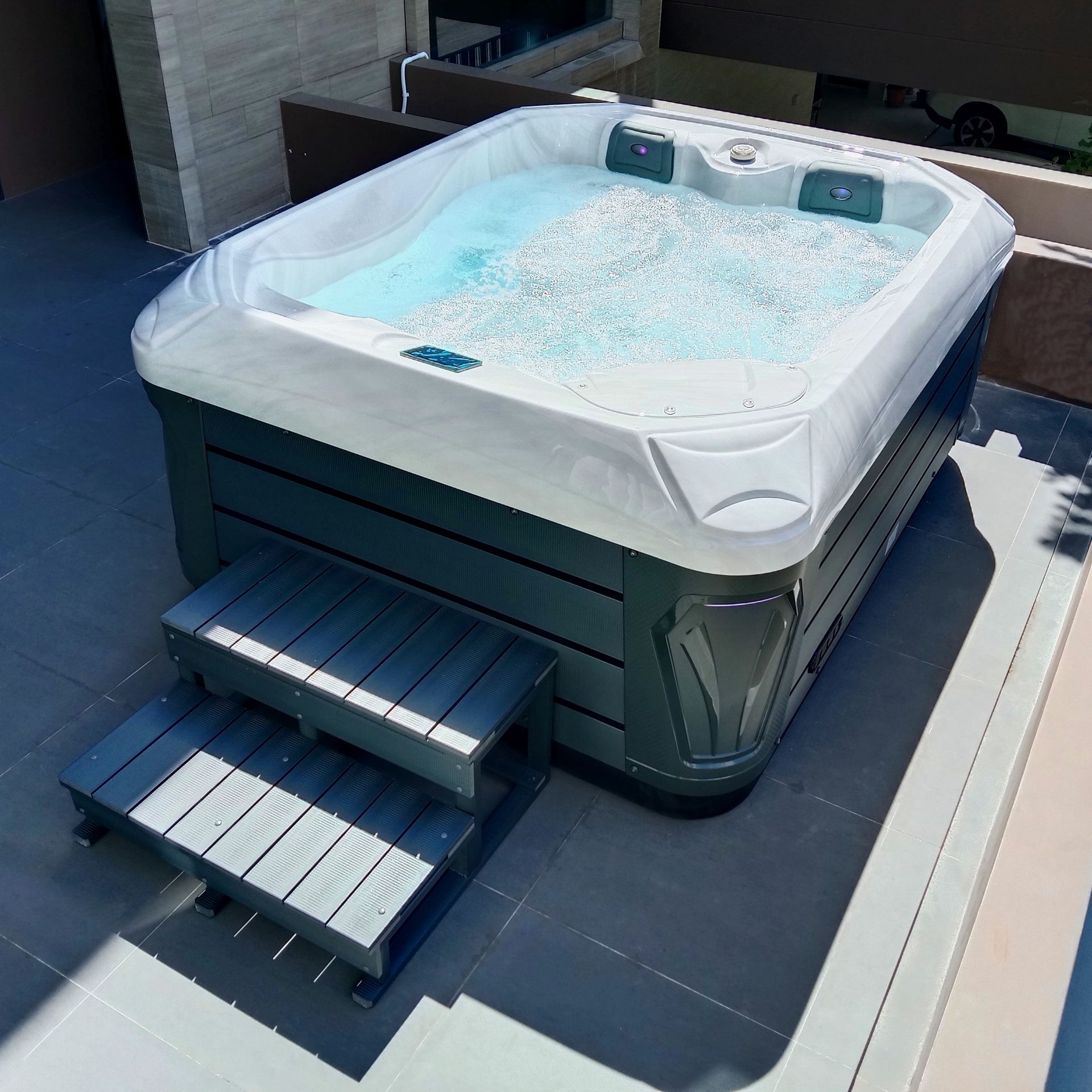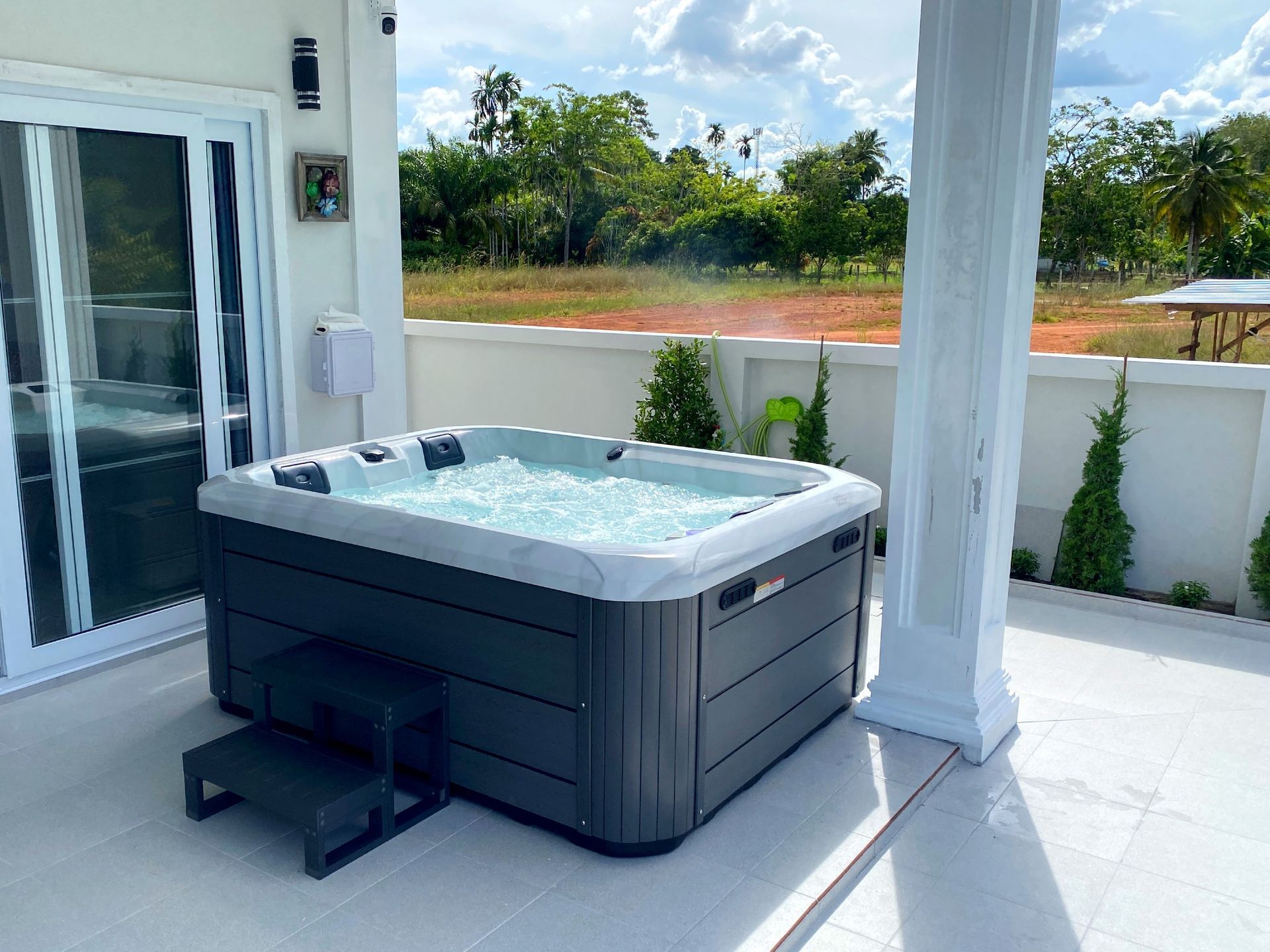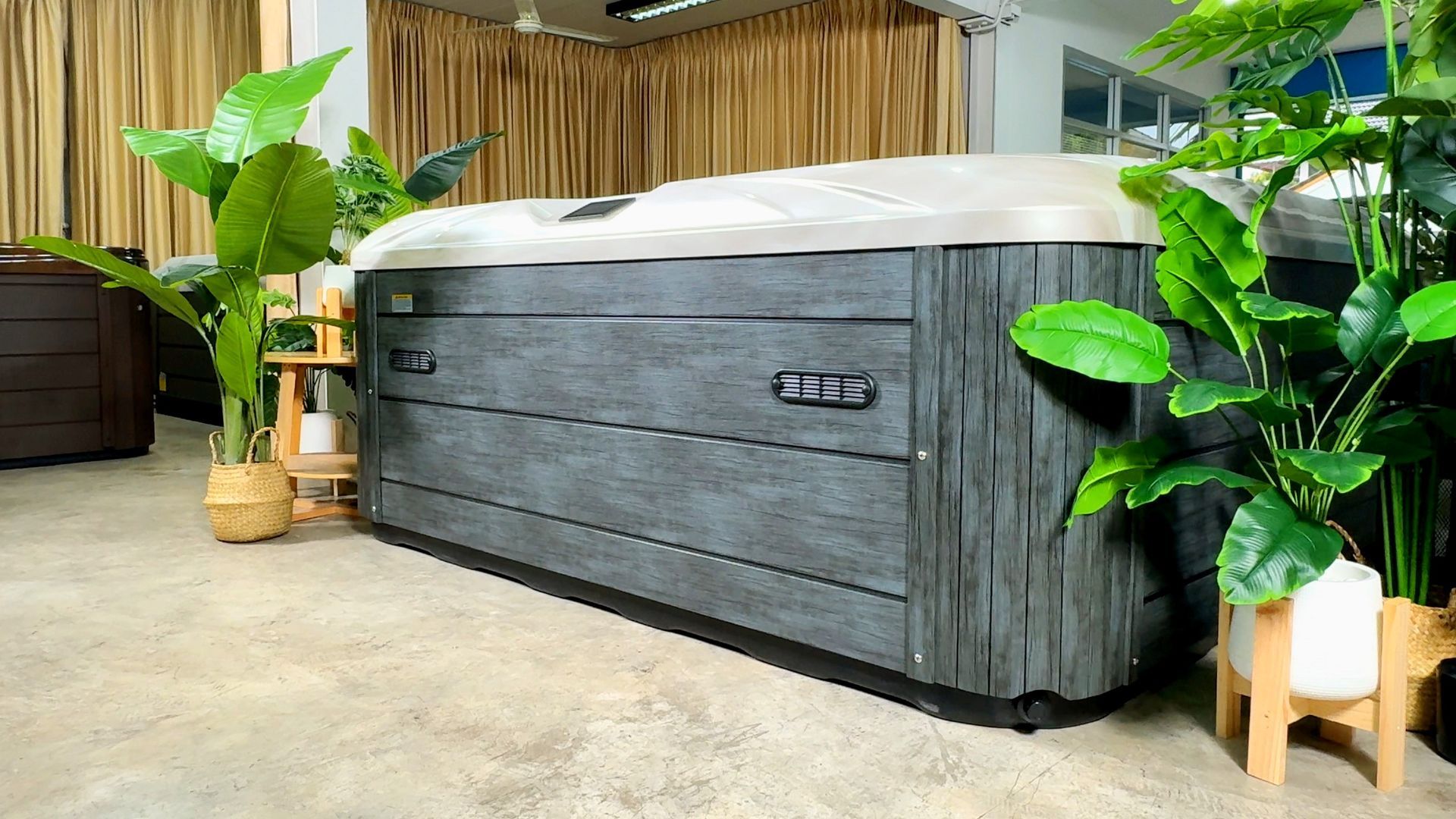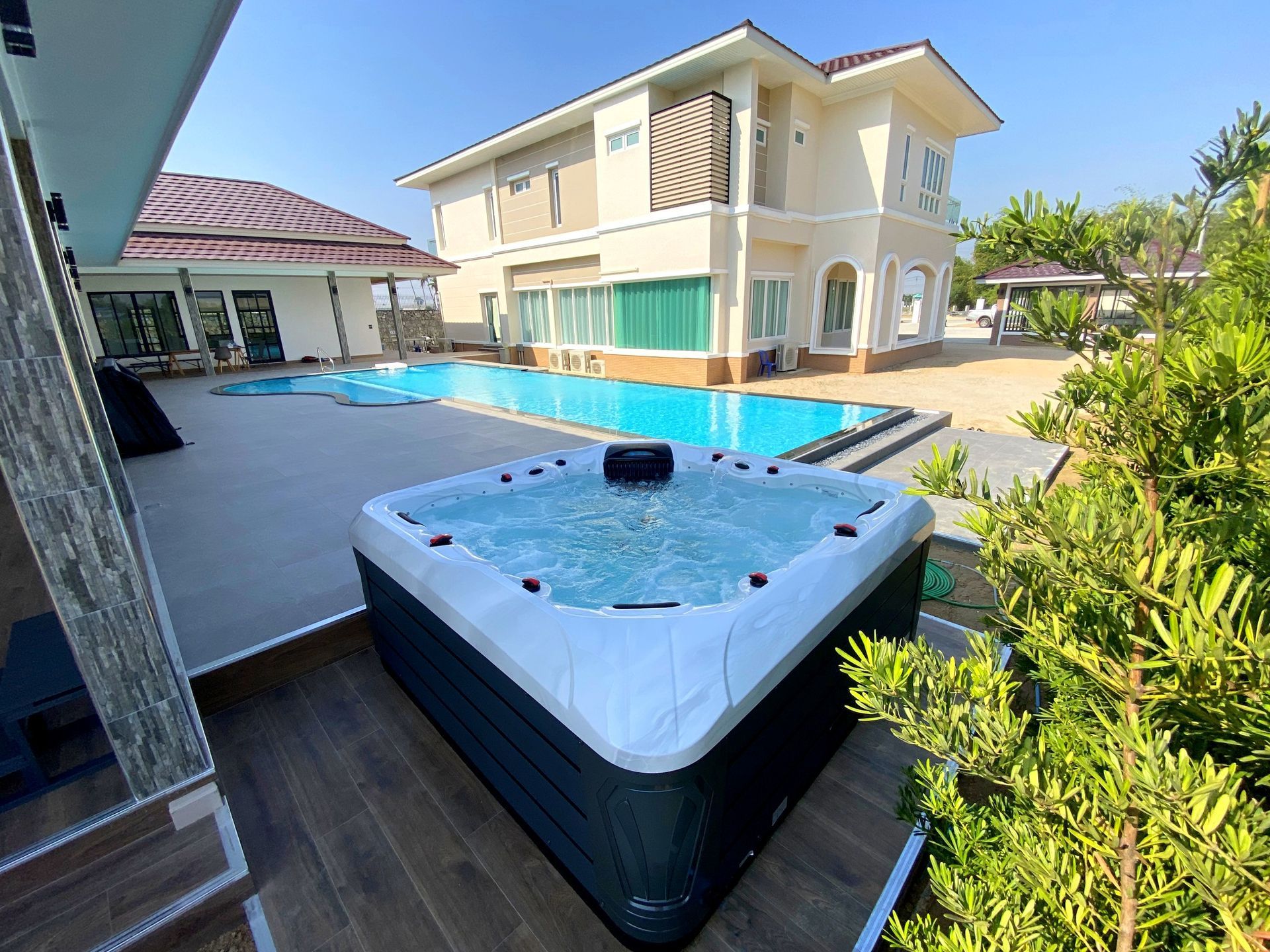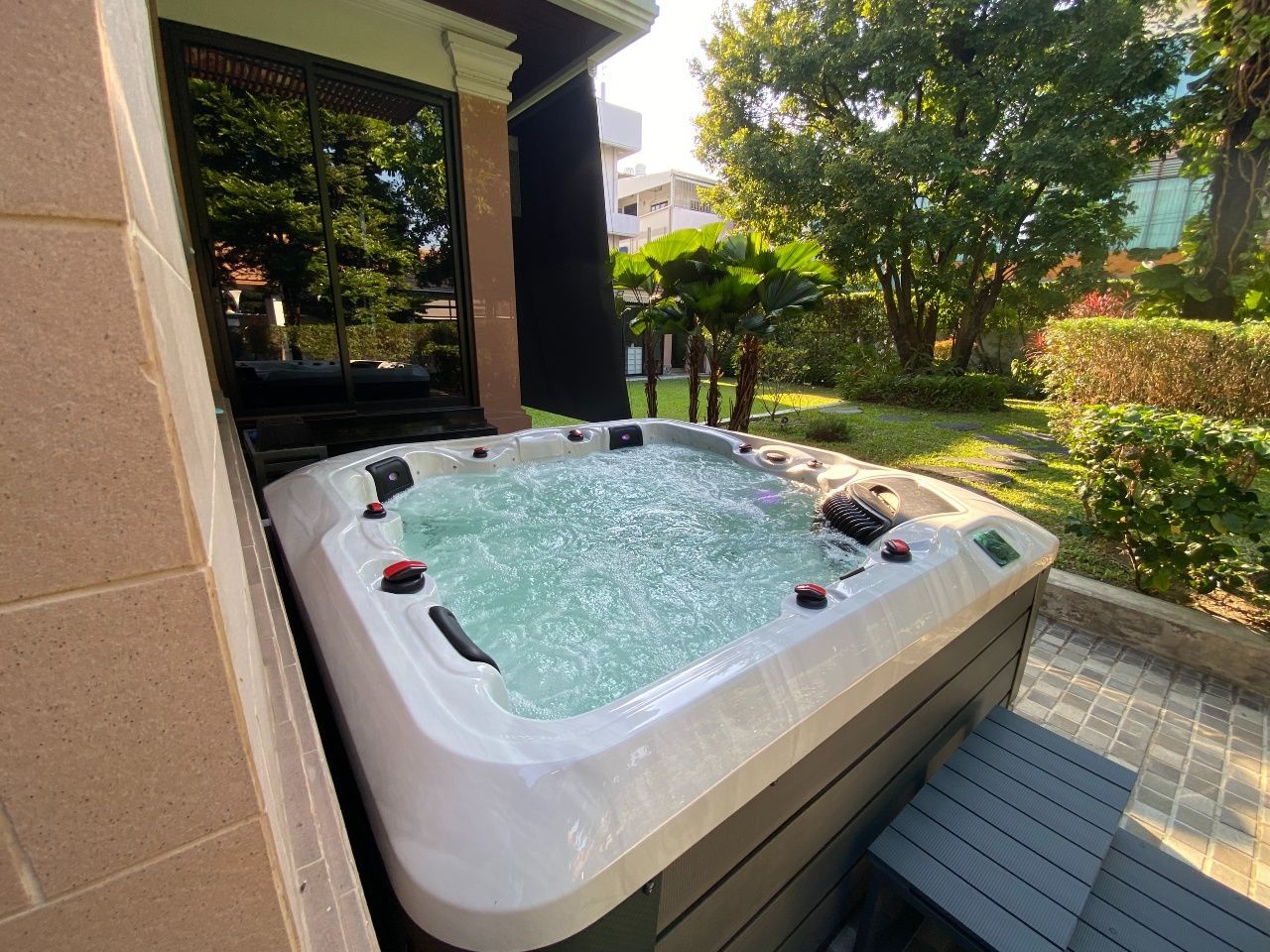Outdoor Hot Tubs & Health Benefits: Sleep, Stress Relief, Back & Joint Pain
Discover science-backed health benefits of outdoor hot tubs
Looking to turn your outdoor hot tub (อ่างน้ำร้อนกลางแจ้ง) into a real wellness tool? Below you’ll find a clear, research-informed guide that expands on the classic benefits—better sleep, stress relief, and support for back and joint pain—and shows how hot tubs provide those benefits (warmth, buoyancy, hydro-massage). You’ll also get safety guidelines, ideal temperatures, session timing, and water care basics, backed by reputable references.
Quick disclaimer: The information here is general and educational. If you’re pregnant, have heart disease, low blood pressure, diabetes, neuropathy, open wounds, or any condition that may be affected by heat or immersion, talk to your clinician first.
Cleveland Clini
Key Health Benefits
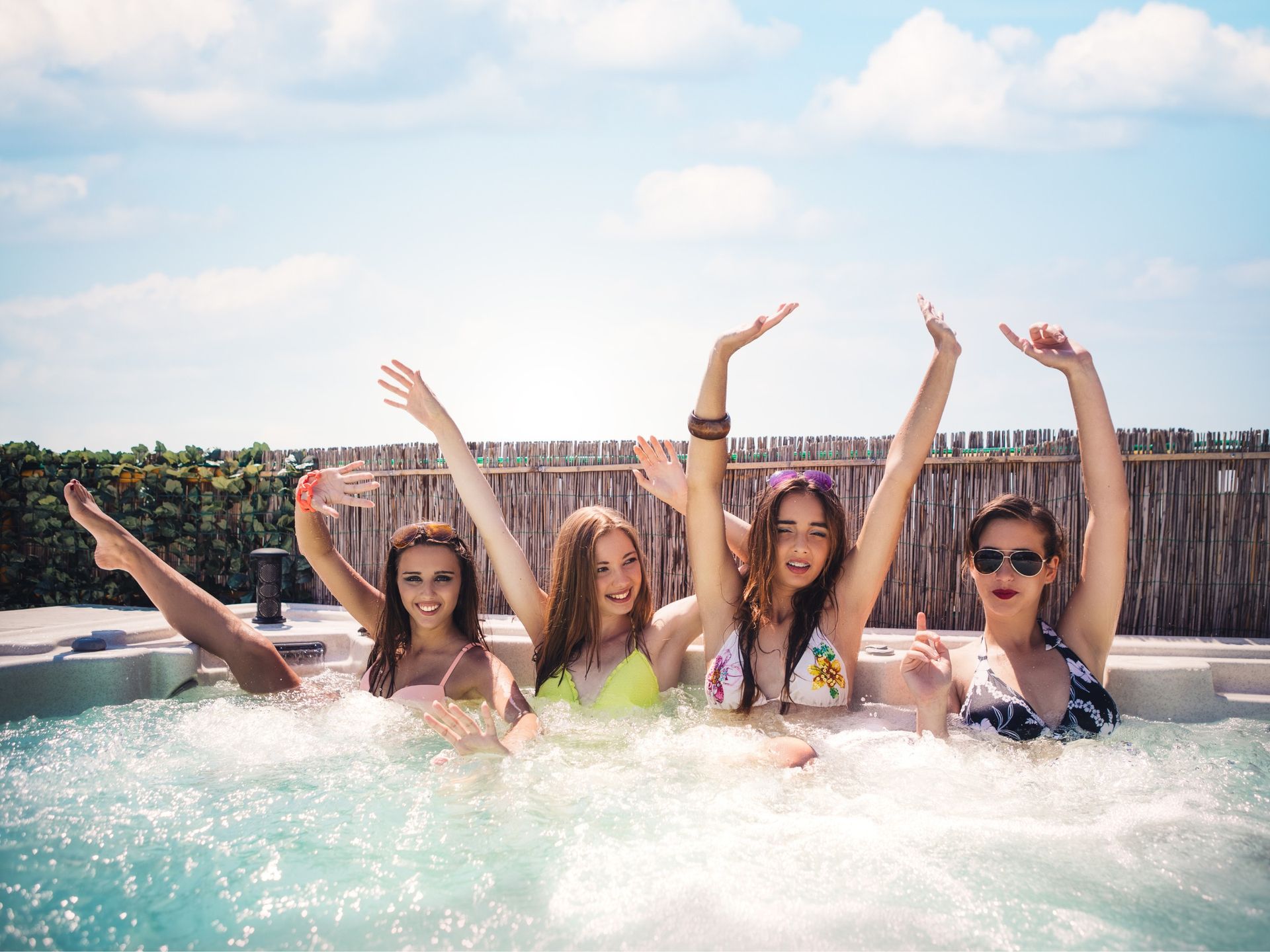
1) Sleep better (fall asleep faster, sleep more deeply)
A warm bath or soak before bed can shorten sleep-onset latency and improve sleep efficiency. A 2019 systematic review found that a 10-minute warm bath 1–2 hours before bedtime helps people fall asleep faster and sleep more efficiently. (That paper studied showers/baths up to ~40–42.5 °C; most hot tubs cap at 40 °C, which still produces the same “warm-then-cool” sleep effect.)
How to use your outdoor hot tub for sleep:
- Soak 1 – 2 hours before bedtime so your body can cool slightly afterward (that cooling cue helps you feel sleepy).
- Keep water at ≤ 40 °C (104 °F) for safety.
- Start with short sessions (about 10–20 minutes); step out sooner if you feel overheated or light-headed.
2) Reduce stress and promote relaxation
Warm water immersion dilates blood vessels and, together with hydrostatic pressure, shifts blood toward the chest, supporting circulation while reducing peripheral vascular resistance—physiological changes linked to relaxation. Reviews of immersion physiology describe these effects clearly.
Long-standing aquatic research also shows warm water immersion can decrease sympathetic (stress) activity and support a calmer state.
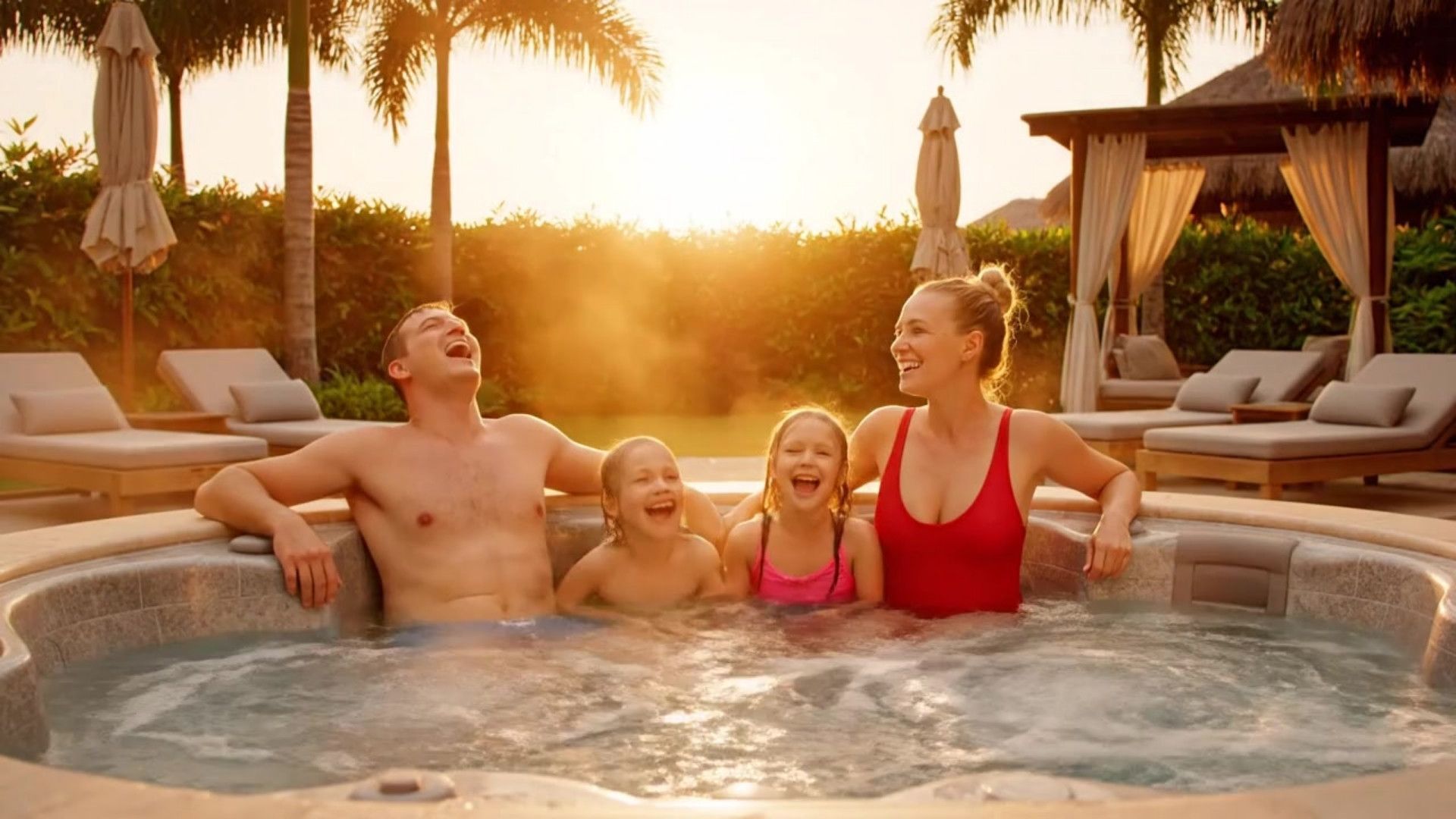
3) Back pain relief and looser, more comfortable muscles
Heat is a well-known, non-drug option for short-term relief in low back pain, improving comfort and mobility. Evidence spans spa therapy meta-analyses and heat-therapy reviews.
Tip: Target sore areas with the massage jets and experiment with seat positions that let your back muscles relax without bracing.
4) Support for stiff or arthritic joints
Warm-water-based programs (including soaking and gentle movements) reduce pain and improve function in osteoarthritis and other musculoskeletal conditions. Evidence includes clinical guidelines and meta-analyses of aquatic exercise.
People often feel more mobile after soaking because heat lowers muscle stiffness and buoyancy unloads the joints, making movement easier and less painful.
How Hot Tubs Deliver These Benefits (The Science Behind the Soak)
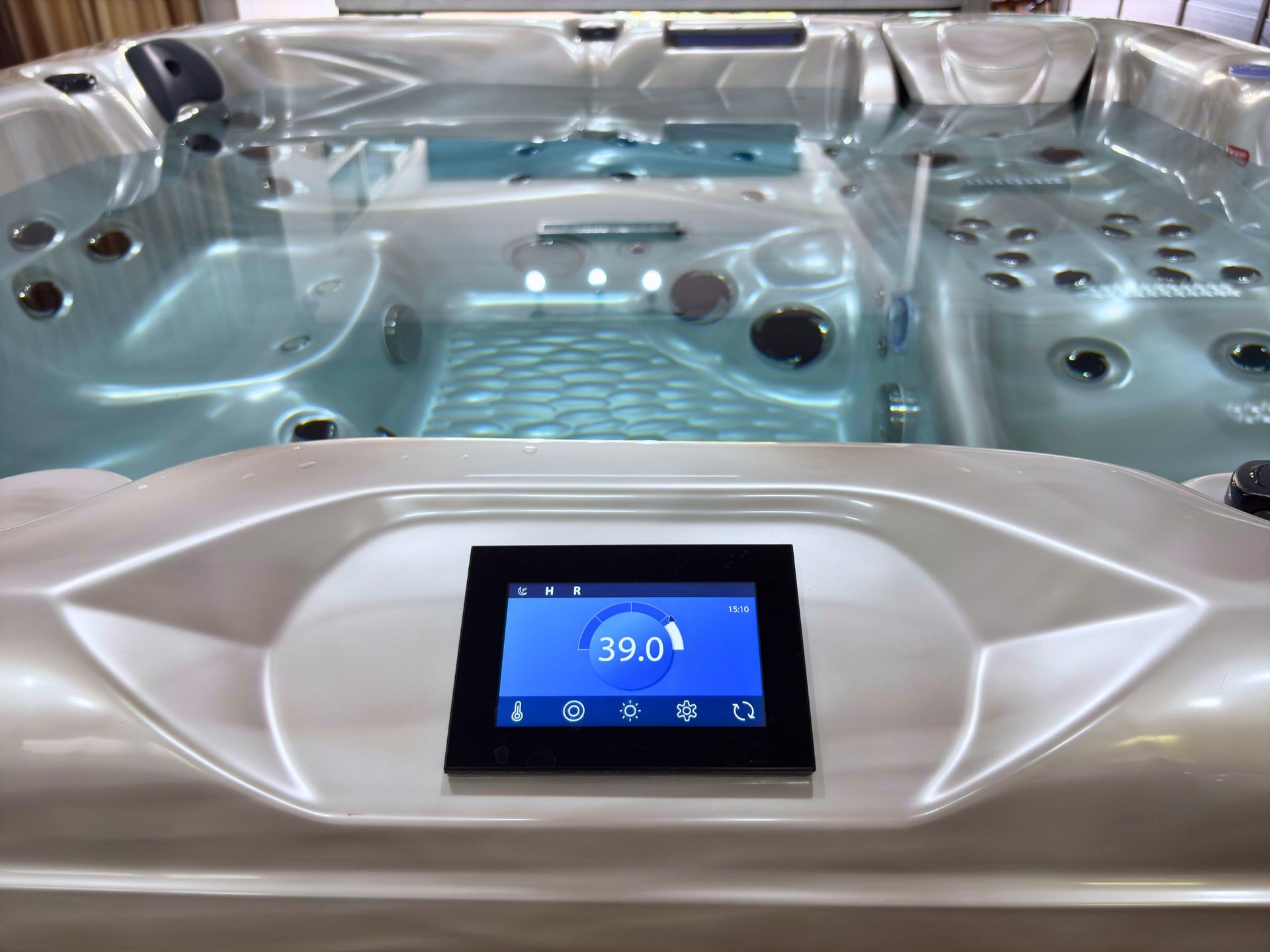
A) Warm water (thermotherapy)
- Vasodilation & circulation: Warmth relaxes smooth muscle in vessel walls, increasing blood flow to skin and muscles—part of why tight areas feel looser after a soak.
- Sleep physiology: The “warm-then-cool” sequence advances your body’s natural thermoregulatory cues for sleep.
- Pain modulation: Superficial heat can reduce pain and muscle guarding, supporting flexibility and movement confidence.
B) Buoyancy (reduced joint loading)
Water off-loads body weight substantially: immersion to the xiphoid/chest reduces effective load by about 60%; immersion to the shoulders/neck reduces it by roughly 85%. Less load means less joint compression and easier movement.
C) Hydrostatic pressure
Water gently compresses the body, aiding venous return and fluid balance. This supports circulation during immersion and may help with that “light, decompressed” feeling after a soak.
D) Hydro-massage jets
Properly positioned jets target common tension areas (neck/shoulders, mid-back, lumbar region, calves/feet), combining heat, buoyancy, and mechanical stimulation to relax muscles and reduce perceived pain. (These mechanisms align with aquatic therapy principles summarized in Becker’s work and hydrotherapy reviews.)
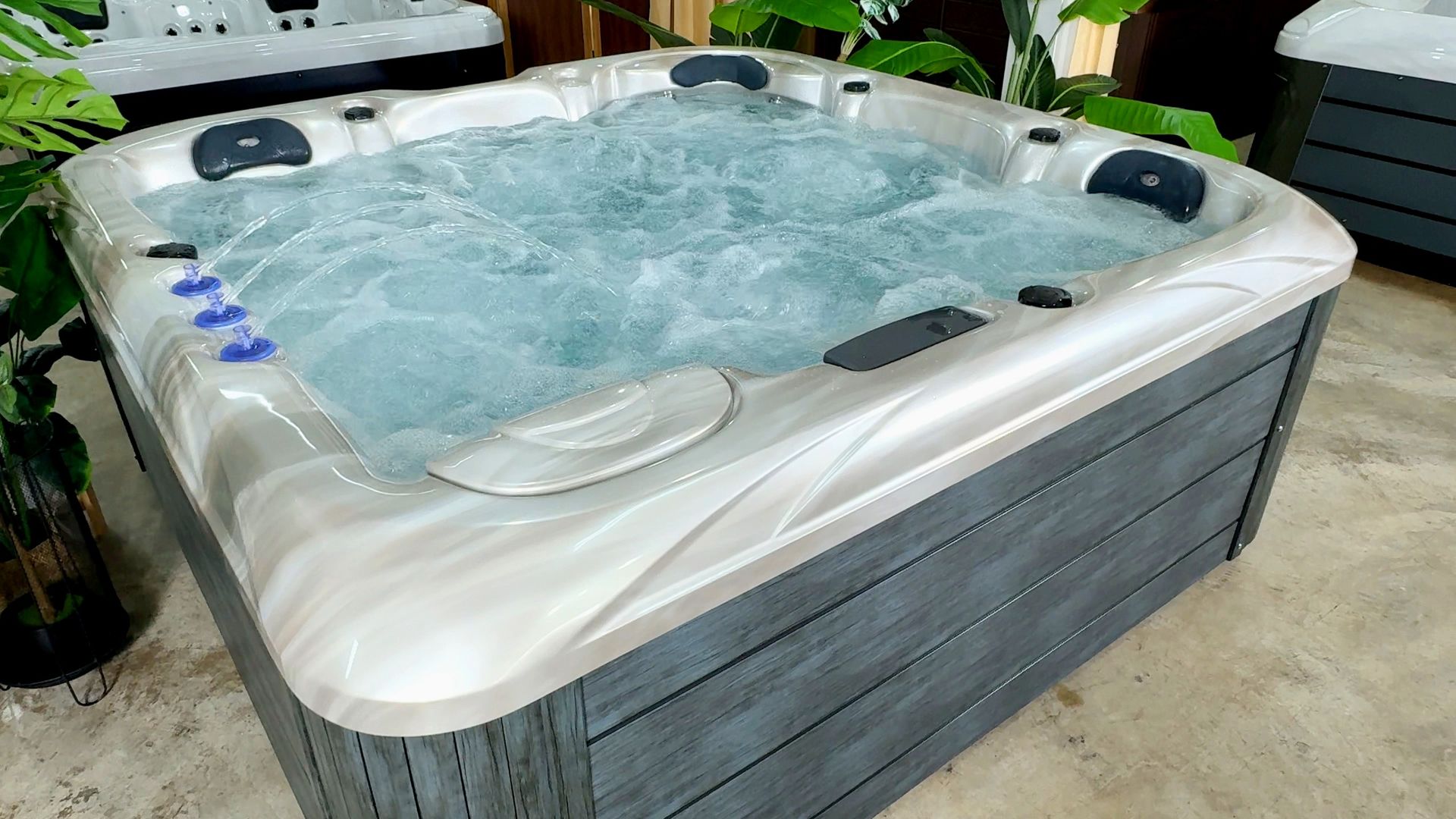
Practical How-To: Temperatures, Session Length & Safety
- Temperature: Keep water at or below 40 °C (104 °F). This is the widely accepted maximum for adult use in hot tubs/spas.
- Session length: Begin with short sessions (≈10–20 minutes) and take breaks to cool and hydrate. Many safety bodies suggest ~15 minutes per session as a sensible upper bound before a break. Always exit sooner if you feel too warm, dizzy, or unwell.
- Hydration: Drink water before and after your soak. Heat can dehydrate you even if you don’t notice sweat.
- Pregnancy: Avoid hot tubs during pregnancy (especially the first trimester) due to risks from elevated core temperature; discuss alternatives with your OB-GYN.
- Children: Follow local guidance; high temps are not appropriate for young children, and access should be controlled.
- Medical conditions & meds: If you have cardiovascular disease, very low/high blood pressure, neuropathy, skin infections, or take medications that affect circulation or heat sensitivity, consult your clinician first.
- Alcohol: Skip alcoholic drinks while soaking; alcohol increases overheating and accident risk.
Clean Water = Safer Wellness
For home hot tubs, test and maintain disinfectant and pH to minimize germ exposure:
- Chlorine: at least 3 ppm
- Keep water ≤ 40 °C (104 °F) and follow manufacturer maintenance schedules.
Choosing the Right Outdoor Hot Tub for Health-Focused Use
- Depth options (immersion level): Health benefits increase as buoyancy increases. If you can vary seats so water reaches mid-chest, shoulders, or neck, you’ll unload more joint stress (≈60% at chest; ≈85% at shoulders).
- Ergonomics: Look for multiple seating depths and reclined lounges to support the lumbar region and reduce muscle bracing.
- Jet layout: Prefer adjustable jets targeted to the neck/shoulders, mid-back, lower back, glutes, calves, and feet—the areas most people want to relieve.
- Stable temperature control: A reliable thermostat that caps at 40 °C with good insulation keeps energy use and temps consistent.
- Easy maintenance: Ozone/UV options and accessible filters make it easier to maintain safe disinfectant levels.
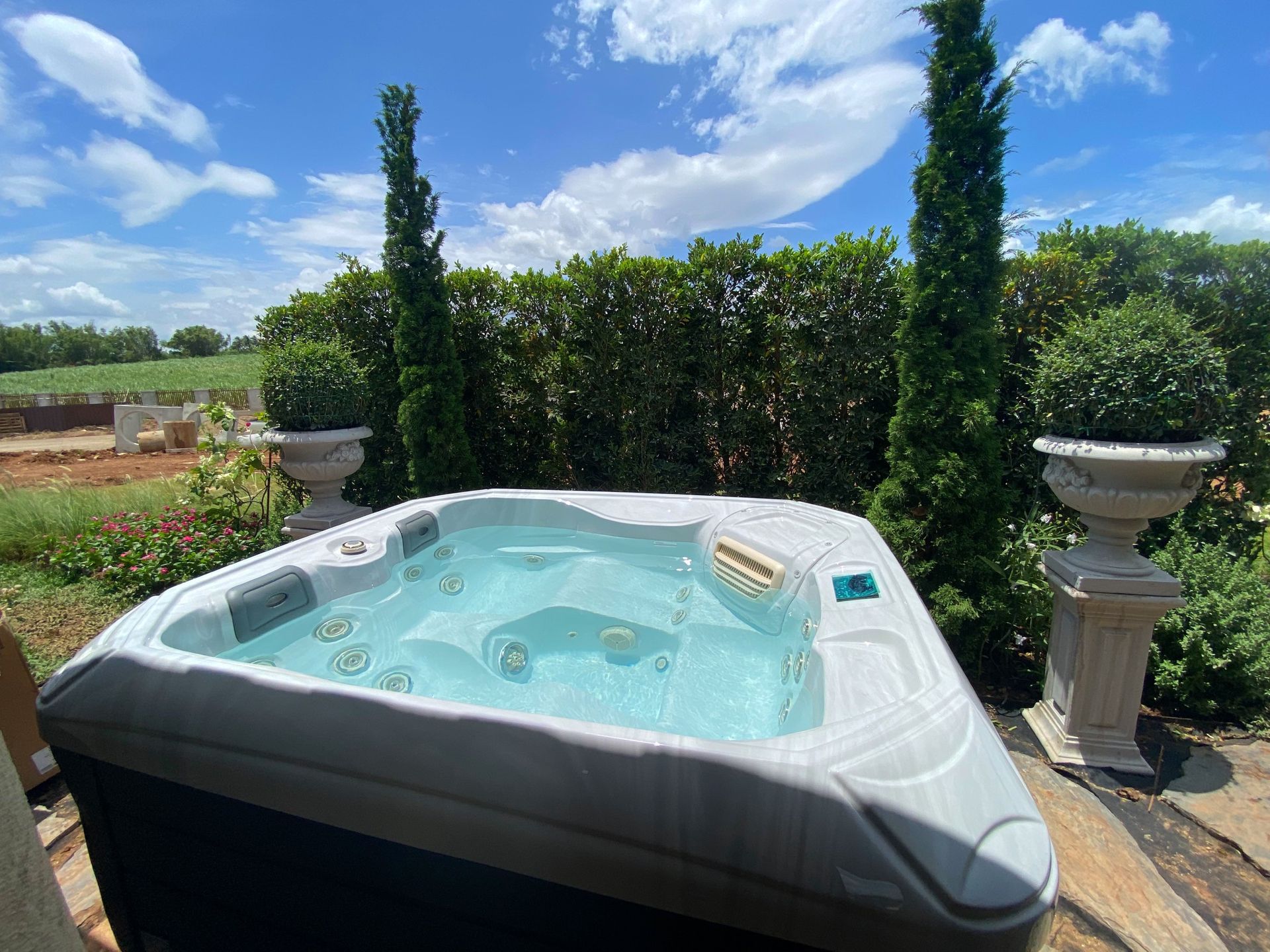
Sample Routines You Can Try
For deeper sleep (evening):
- Rinse off first, then soak 10–20 minutes at up to 40 °C.
- Get out 1–2 hours before bed to allow a gentle cool-down.
- Keep lights low and screens off to reinforce your sleep cue.
For stiff backs (daytime):
- Soak 10–15 minutes.
- Use gentle pelvic tilts or slow knee-to-chest movements while buoyant (if your clinician approves).
- Finish with 5 minutes of quiet floating to let muscles settle.
For achy joints (OA support):
- Choose a seat depth that gets water to the chest or shoulders for better off-loading.
- Perform gentle range-of-motion (ankle circles, knee extensions, shoulder rolls).
- End with jet massage to quads, calves, and lumbar region.
Common Myths (and What Science Actually Says)
- “Hot tubs detox your body.”
Sweating is your body’s cooling method; your liver and kidneys do the heavy lifting for detox. A soak may improve skin blood flow and pore openness, but it isn’t a medical “detox.” (Use hot tubs for comfort and movement, not detox claims.)
- “Hotter is always better.”
- Not true. Stay ≤ 40 °C, use short sessions, and prioritize how you feel.
Frequently Asked Questions - FAQs
How hot should an outdoor hot tub be?
For adults, ≤ 40 °C (104 °F). Don’t exceed this limit.
How long should I stay in?
Begin with 10–20 minutes, then cool off and hydrate; many safety groups suggest about 15 minutes per session before a break. Exit sooner if you feel warm, dizzy, or unwell.
Is it safe during pregnancy?
No—avoid hot tubs while pregnant due to risks from elevated core temperature; ask your OB-GYN for safer alternatives.
Can hot tubs help arthritis or back pain?
They can ease pain and stiffness and support mobility as part of a broader plan (exercise, rehab, medical care). See evidence for OA and low back pain improvements.
References (selected)
- Haghayegh S. et al. Sleep Medicine Reviews (2019): Warm bathing before bed improves sleep onset and efficiency. PubMed
- CDC Healthy Swimming: Hot-tub safety (max 104 °F/40 °C, disinfectant & pH guidance). CDC+1
- Torres-Ronda L., del Alcázar X. Int J Sports Physiol Perform (2014): Buoyancy off-loads 60–85% of body weight depending on immersion depth. PMC
- Bai R. et al. Medicine (Baltimore) (2019): Spa therapy benefits chronic low back pain. PMC
- Cochrane Review (heat/cold for low back pain): Moderate evidence for superficial heat. Cochrane
- Song J.A. et al. (2022): Aquatic exercise reduces OA pain and improves function and QoL. PMC
- Becker B.E. (2009): Biophysiologic effects of warm water immersion (aquatic therapy foundations). ScholarWorks
- Immersion physiology and hydrostatic pressure effects on circulation. PMC+1
- RoSPA safety tips: ~15 minutes per session guideline and hydration/alcohol cautions. RoSPA
- Cleveland Clinic (2025): Avoid hot tubs in pregnancy. Cleveland Clinic
Explore outdoor hot tubs today to ease muscle soreness, boost circulation, and enjoy the ultimate post-workout therapy.
QandGTub.com



